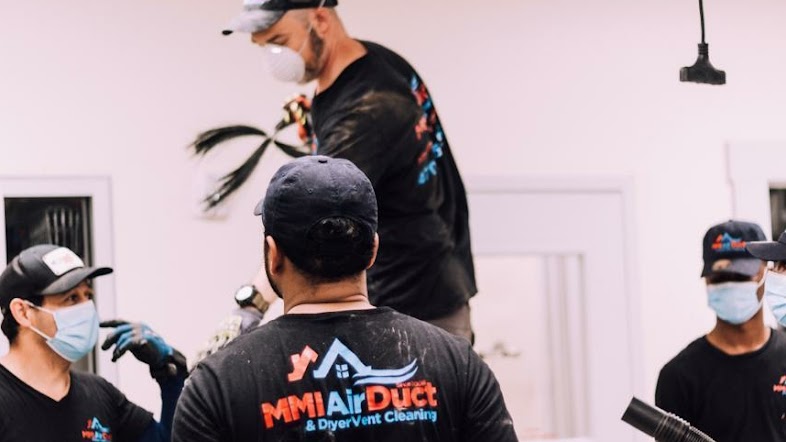Mold allergies can be debilitating, but there are ways to help alleviate those symptoms. If you suffer from allergies caused by mold, a humidifier can be your best friend. Here are some of the benefits you should know about. This article will explain both how mold affects your health and how a humidifier can help you with allergies caused by mold.
How does humidifier work:
Humidifiers are a great way to increase the humidity in your home, and getting the right one is an important part of the process. While you might think your humidifier is doing its job, there are actually a lot of things that could be going wrong if your humidifier isn’t working like it should. To enhance humidity, humidifiers release steam or water vapor into the air. Humidity is simply the amount of water vapor present in the air. Additionally, humidity may affect the onset and treatment of allergies.
One technique to ease the discomfort and symptoms of allergies is to breathe air with greater humidity. For instance, nasal congestion, irritation, and inflammation of the delicate, moist tissues of the nasal mucosa are frequently symptoms of allergic rhinitis. One can bring quick relief by reducing the inflammation in the tissues of a particular affected body part. Similarly, you can also clean the nasal cavity of the affected person from. irritants and allergens. Thus, lessening the symptoms of allergies. Contact MMI Home Improvement for the best air duct sanitizing in Cumming to get their professional cleaning services.
If you’re looking to improve your indoor air quality, a humidifier might be the best solution. Humidifiers are designed to increase the humidity of the air in your home, which has a variety of benefits. If you’re looking to buy a humidifier for your home, you’ll want to consider the various types of humidifiers available.

Top five Humidifier types
You can select the humidifier that best suits your needs from various models. Humidifiers come in the following models and can produce a warm or cool mist.
1. Humidifiers with warm mist and cool mist
Before anything else, you must decide between warm mist and cool mist humidifiers. Warm mist humidifiers release warm smoke or steam vapors, and the mist is tangible and perceptible. Compared to other types of humidifiers, they typically operate a bit quieter. And maybe the most effective at clearing mucus and calming the sinuses. For smaller spaces, like a bedroom, they work well. However, you must keep these humidifiers away from kids since they emit an extremely hot mist.
Humidifiers that produce cool mist are usually quiet and straightforward to maintain, although they require more frequent cleaning. They function better in larger spaces, and some individuals think breathing chilly mist is more comfortable. People mostly use such humidifiers in hot areas.
2. Evaporative humidifiers:
Cool mist humidifiers are evaporative humidifiers. These humidifiers use a blower which draws fresh air into the humidifier. This air is then forced through a moistened wick submerged in water. Consequently, the humidifier produces Humidity in the air as a result of water evaporation. In the process, this also cools the air, making it a suitable option in hotter areas.
3. Ventilator humidifier
Humidifiers that produce cold mist include air washers, improving air quality and humidity. This humidifier reduces most significant pathogens (bacteria and viruses) and irritants from the air by rotating filter discs soaked in water. These humidifiers require more frequent cleaning and upkeep, but removing pollen and dust can provide more excellent allergy relief. Air duct dry fogging disinfection is also a good alternative.
4. Humidifier with ultrasound Technology
Both cold mist and warm mist ultrasonic humidifiers are available, and some even offer the choice of both. An Ultrasound humidifier uses Ultrasound rays to quickly vibrate water into little particles. After that, the fan disperses these particles into the air as a mist, which evaporates.
5. Humidifier With Steam Vapor Technology
Steam vapor humidifiers release the humidity into the air as a steam vapor after heating the water to a high temperature. Numerous humidifiers heat the water to a temperature where irritating substances like bacteria, algae, and mold can be eliminated. Compared to other humidifiers, this decreases the likelihood of allergens being discharged into the air.
Humidifiers are a great way to keep your house comfortable for the winter months. But, not taking proper care of your humidifier can cause it to become less effective, which can cause mold and bacteria to grow, making your home a less comfortable place to be. Here are a few tips to help you take care of your humidifier and keep it working properly.
How To Take Care Of Your Humidifiers:
Overly humid indoor conditions may worsen allergies caused by mold rather than help them. Dust mites are one prevalent allergen, and these organisms can survive only at relative humidity values of between 70 and 80 percent. Other frequent triggers of allergies include mold and mildew. In environments with excessive humidity, mold grows unhealthily more frequently.
Finding the proper humidity level is crucial for reducing allergy symptoms and asthma caused by allergies while preventing the growth of mold and dust mites.
The condition of the mucous membranes in the airways can be improved, and allergy symptoms can be lessened with humidifiers. You should see the checklist before hiring air duct and dryer vent cleaning service. Humidifiers, however, can potentially exacerbate allergy symptoms or even lead to other ailments if they are not properly maintained. Growing fungus and bacteria can be hazardous when breathed into the lungs.
Keep Your Humidifier Clean
Particularly for people who already have asthma or allergies, using dirty humidifiers might have adverse health effects.
Here are some cleaning instructions for your humidifier:
- Rinse and completely dry the reservoir after each use.
- Use vinegar to remove any hard water buildup on your humidifier at least once weekly and before storing it. Use a disinfectant as the manufacturer has advised.
- After a time of inactivity, clean your humidifier once again when you take it out. Fill it just when you are prepared to use it.
Airborne allergens and other particles can cause health problems in people who are sensitive to them. This is why it is important to understand how to position a humidifier in a home.
How to place humidifier in a house for effective removal of allergens:
Make sure to get a humidifier big enough to fill the space if you’re considering utilizing one to cure allergies. You might only need a humidifier in your bedroom or one for your entire home or place of business. It’s possible that humidifiers won’t cover the space they claim to, so buy one that’s a little bigger than you think you’ll need.
Never let the humidity level get beyond 50%, as this will make the air too humid and encourage the growth of dust mites. It can make your allergy symptoms worse. You can purchase a hygrometer, which measures relative humidity indoors to measure the humidity levels in your home.
Your allergies will only benefit from humidifiers if you maintain and clean them frequently. Your allergy symptoms may worsen if you don’t clean the humidifier. Always select a humidifier whose benefits for your allergies can be maintained by cleaning it frequently enough.
